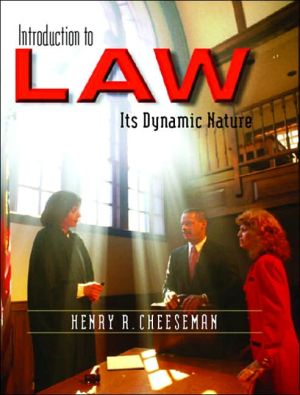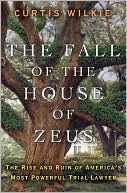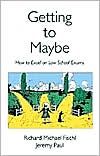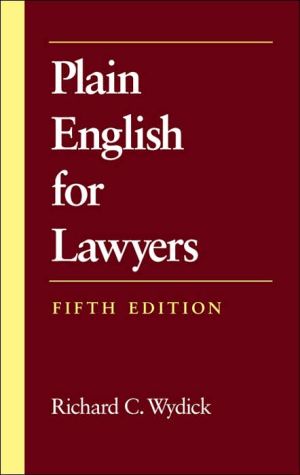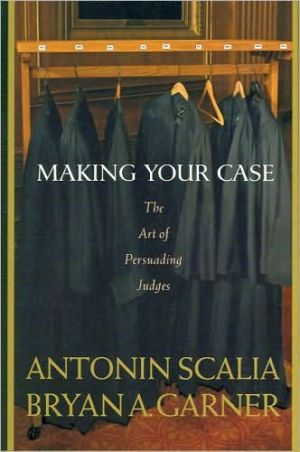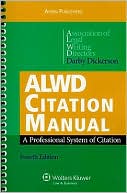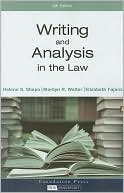Introduction to Law: Its Dynamic Nature
This complete introduction to law places emphasis on ethics and international issues, showing readers how to engage in ethical, analytical reasoning with every topic from legal fundamentals to areas of substantive law. The features of this book encourage readers to apply critical thinking, organizational and summation skills, and legal research tools to solve specific legal problems. The American court system, criminal law and ethics, contracts and E-Commerce, family law, real and personal...
Search in google:
This complete introduction to law places emphasis on ethics and international issues, showing readers how to engage in ethical, analytical reasoning with every topic from legal fundamentals to areas of substantive law. The features of this book encourage readers to apply critical thinking, organizational and summation skills, and legal research tools to solve specific legal problems. The American court system, criminal law and ethics, contracts and E-Commerce, family law, real and personal property, agency, employment, and equal opportunity law, intellectual property and internet law, and administrative law, consumer, investor, and environmental protection. For paralegals, legal assistants, lawyers, and all legal professionals.
TO THE INSTRUCTORS\ The editors would like to point out that Henry Cheeseman's award-winning teaching style and extensive knowledge of every aspect of the law comes shining through every page in this book. Introduction to Law, along with all of Henry Cheeseman's publications, is recognized as a complete teaching package. All course materials for teaching with Professor Cheeseman's books are prepared with you in mind.\ Features of the Book\ Students learn how to engage in ethical, analytical reasoning with every topic from legal fundamentals to areas of substantive law. The features of the book encourage students to apply critical thinking, organizational and summation skills, and legal research tools to solve specific legal problems. These features include:\ \ Chapter Outline, Objectives, Terminology, and Summary in every chapter\ Special boxed examples, graphics, photos, and diagrams illustrating essential points\ In each chapter, one or more Cases for Discussion, with questions, as well as the chapter-end feature Cases for Discussion, which includes additional cases and one ethics case\ Guidelines for briefing a case and one Case for Briefing activity in each chapter\ Sidebars highlighting information about text topics and the legal profession\ Ethical Perspective, Information Technology, and International Perspective feature boxes\ Working the Web research exercises and Critical Legal Thinking Questions\ \ TO THE STUDENTS\ Each semester, as I stand up in front of a new group of students in my law class, I am struck by the thought that, cases and statutes aside, I know two very important things that they have yet to learn. The first is that I draw as much from them as they do from me. Their youth, enthusiasm, questions, and even the doubts a few of them hold about the relevance of law to their futures, fuel my teaching. They don't know that every time they open their minds to look at a point from a new perspective or critically question something they have taken for granted, I get a wonderful reward for the word that I do.\ The other thing I know is that both teaching and learning the legal and ethical environment are all about stories. The stories I tell provide the framework on which students will hang everything they learn about the law in my class. It is my hope that long after the facts about the specific language of the statutes and legal principles have faded, they will retain that framework. Several years from now, "unintentional torts" may draw only a glimmer of recognition with students who learn about them in my class this year. However, they will likely recall the story of the woman who sued McDonalds for serving her coffee that was too hot and caused her injuries. The story sticks and give students the hook on which to hang the concepts.\ I reminded myself of these two facts when I sat down to write Introduction to Law. My goal is to present law and ethics in a way that will spur students to ask questions, to go beyond rote memorization. Law is an evolving outgrowth of its environment, and that environment keeps changing. In addition to the social, ethical, and international contexts I have incorporated in Introduction to Law, this book also emphasizes coverage of e-commerce and the Internet as two vital catalysts to the law and a key part of its environment.\ It is my wish that my commitment to these goals shines through in this labor of love, and I hope you have as much pleasure in using it as I have had in creating it for you.\ A Helping Hand\ The editors at Pearson Prentice Hall want you to know that other materials are available to help you in your studies. Visit www.prenhall.com/legalstudies studies to find Resources to help you with your course work. The Companion Website can help you study and review the information in this book, and practice test taking. You may share the results of your self-test with your professor or keep them to yourself. Use the feedback from the Companion Website as a guide for further study and practice. In addition, numerous Web links are available for reference and further investigation.\ Your professor can order this book shrink-wrapped with free time-limited access to VersusLaw®, an online legal research service. The access code for VersusLaw® allows you to research at your leisure for one semester.\ The book can also be packaged with LexBrief software designed to help you develop the analytical, organizational, and summation skills needed to have a successful career in the industry. On the same CD-ROM you will have a copy of The Lexiverse Dictionary, a customized, standalone dictionary for legal students.
1The nature of law and critical legal thinking32The American court system273Civil litigation and alternative dispute resolution474Criminal law and ethics695Constitutional law and freedoms996Torts and product liability1257Contracts and E-commerce1538Real and personal property1879Family law21510Wills, trusts, and estates23911Business organizations26312Agency, employment, and equal opportunity law30113Credit, suretyship, and bankruptcy335App. ACases for briefing413App. BThe Constitution of the United States431App. CAnalysis using the code of ethics for the National Association of Legal Assistants, Inc439App. DBasic citation reference guide451
